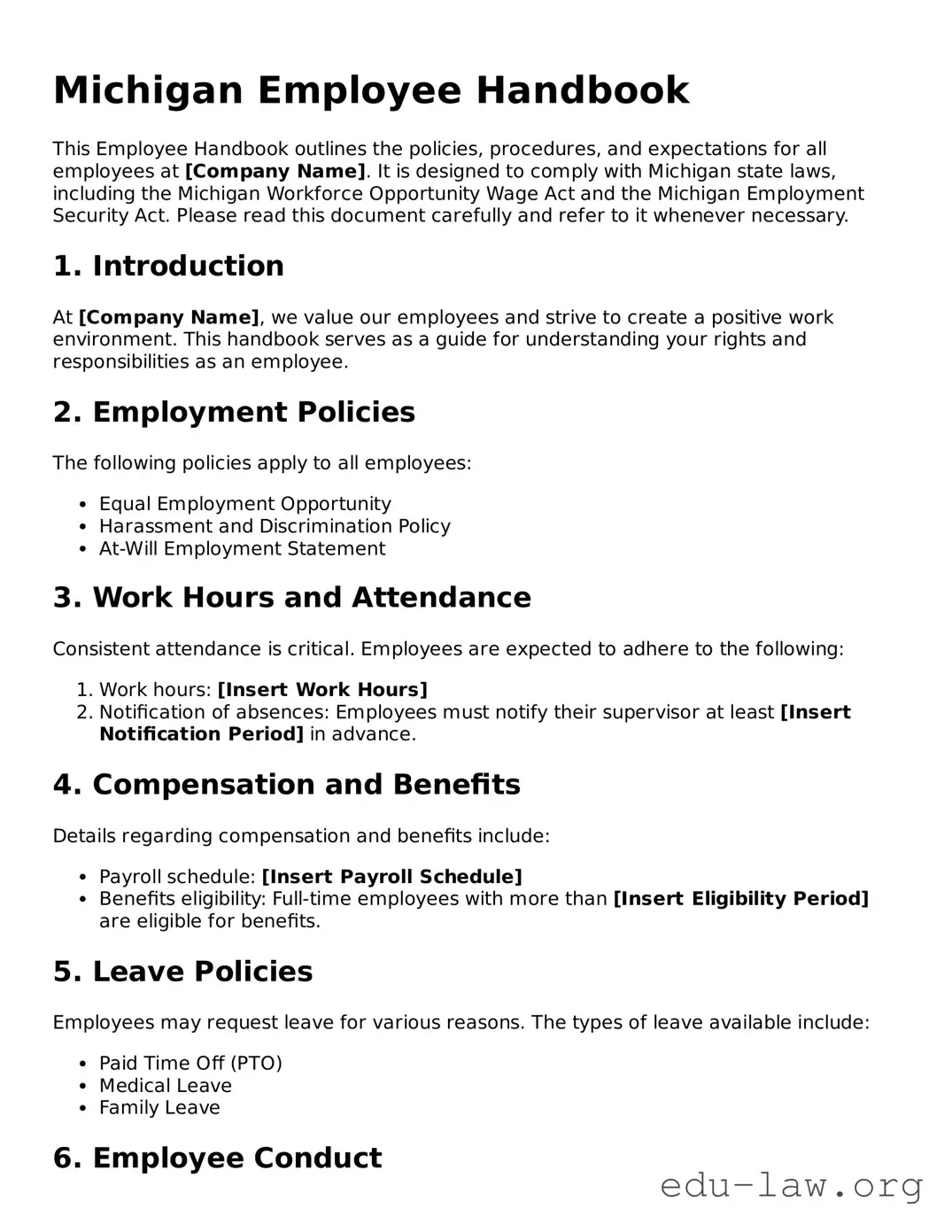What is the Michigan Employee Handbook form?
The Michigan Employee Handbook form serves as a comprehensive guideline for employees and employers within the state. It outlines workplace policies, employee rights, and responsibilities, and provides a framework for understanding the organizational culture. This document aims to promote transparency and consistency in managing workplace expectations.
Why is an Employee Handbook important for Michigan employers?
An Employee Handbook is crucial for employers because it sets clear expectations for employee behavior and company policies. It helps mitigate risks by providing documentation of compliance with labor laws. Furthermore, it can serve as an essential tool for onboarding new employees, ensuring they understand the workplace structure from the outset.
What should be included in the Michigan Employee Handbook?
The handbook should include key elements such as an introduction to the company, policies on attendance, leave, harassment, and discrimination, safety procedures, and a detailed grievance procedure. Additionally, benefits and compensation structures should be clearly articulated, along with any applicable state-specific laws that impact employment.
How often should the Employee Handbook be updated?
It is advisable to review and update the Employee Handbook at least annually. Changes in state and federal laws, organizational structure, or company policies can necessitate revisions. Doing so ensures that the handbook remains relevant and compliant with current regulations, fostering an informed and legally protected workforce.
Is it mandatory for employers to have an Employee Handbook in Michigan?
While it is not legally mandated for employers in Michigan to have an Employee Handbook, it is highly recommended. Having a handbook can provide legal protection for employers by demonstrating adherence to labor laws and clear communication of policies to employees, thus helping to prevent potential disputes.
How should employees receive the Employee Handbook?
Employees should receive the Employee Handbook in a manner that is easily accessible and understandable. It can be provided in print form or digitally through an internal company portal. Employers should also ensure that employees acknowledge receipt and understanding of the handbook, which can strengthen the employee-employer relationship.
What can employees do if they believe there is a policy in the handbook that is unfair?
If employees feel that any policy in the Employee Handbook is unfair, they should first address their concerns with their supervisor or human resources. An open dialogue can lead to understanding or potential revisions of the policy. It is important for employees to know that they have a voice and can advocate for equitable treatment within the workplace.
Can an Employee Handbook create a binding contract between the employer and employee?
Generally, an Employee Handbook does not create a binding contract. However, certain statements within the handbook can be interpreted as legally binding if they promise specific benefits or outline rights in a manner that implies a contractual obligation. It is advisable to include a disclaimer stating that the handbook is not a contract and that employment is at-will unless stated otherwise.
